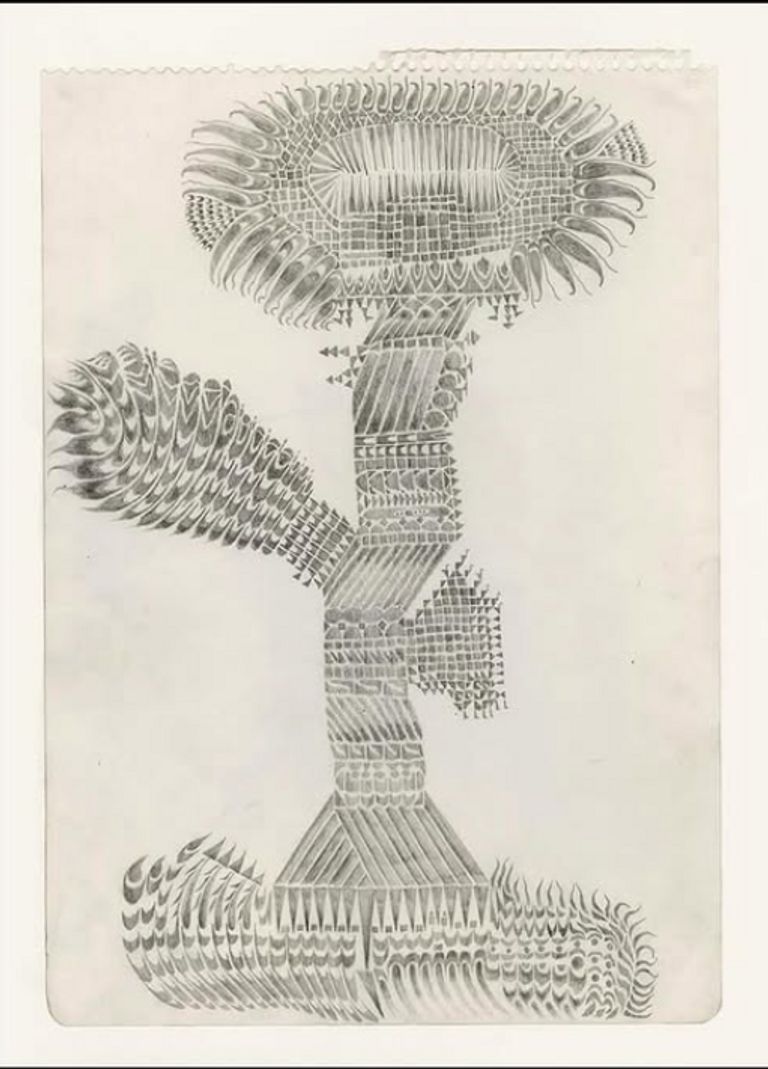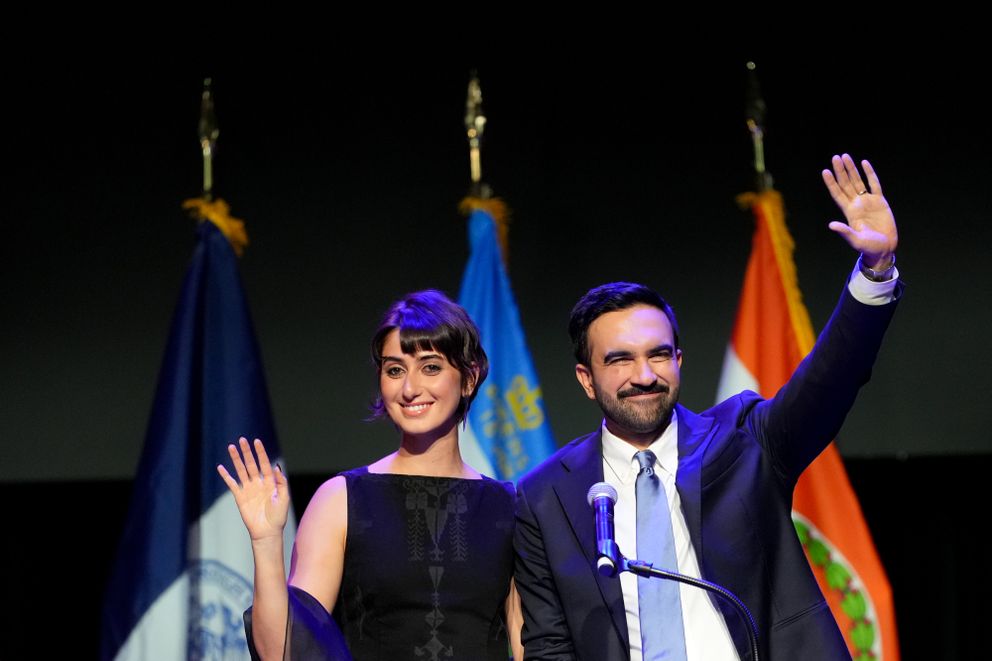The Quiet Force Beside City Hall: Rama Duwaji and New York’s New Political Era
Something about New York’s newest power couple feels both magnetic and enigmatic.
When Zohran Mamdani stormed into City Hall with his historic mayoral win, it wasn’t just his victory speech that captured the city’s imagination. Standing beside him — graceful, still, and largely silent — was Rama Duwaji, the artist whose quiet presence now hums through political conversations with an intrigue all its own.

Who is the woman who has managed to captivate the city without ever trying to?
Behind her serene smile and minimal digital trace, Duwaji is fast becoming one of New York’s most quietly compelling figures — the artist who may very well be redefining what it means to stand beside power.
A Mayor, a Muse, and a Match on Hinge
Against every poll and prediction, 34-year-old democratic socialist Zohran Mamdani pulled off what many called impossible — winning the race to become New York City’s next mayor. His campaign was a call for radical empathy and systemic change; his win, a political earthquake.

But amid the roaring crowds and political analysis, attention has turned to someone who prefers stillness over spotlight: Rama Duwaji, his wife — and perhaps his quietest influence.
Before she became “the mayor’s wife,” Duwaji was a Brooklyn-based illustrator sketching from corner cafés and sunlit studios. Her art was known among peers for its tenderness — everyday moments rendered with emotion and restraint, like secrets whispered rather than shouted.

In 2021, she met Mamdani on Hinge — an algorithmic twist that led to an organic love story. Their connection deepened over long conversations about justice, art, and the fragile beauty of being human in a relentless city. By early 2025, they were married in a modest ceremony at the City Clerk’s office — a love story unadorned, but entirely sincere.
Now, as flashbulbs follow Mamdani into his new role, Duwaji remains elusive — a calm figure in a storm of attention, choosing reflection over rhetoric. Her rare social media posts feel like art installations in themselves: few, deliberate, and quietly intimate.
View this post on Instagram
A Private Muse in the Public Eye
In a deeply personal Instagram post on May 12, 2025, Mamdani wrote:
“Three months ago, I married the love of my life, Rama, at the City Clerk’s office. Now, right-wing trolls are trying to make this race — which should be about you — about her. Rama isn’t just my wife, she’s an incredible artist who deserves to be known on her own terms.”
View this post on Instagram
And known on her own terms she is — even if those terms are minimal. Duwaji has declined all press since her husband’s campaign began, telling The New York Times the sudden wave of attention was overwhelming. Yet to those within her creative circle, she’s already something of a legend.
“She’s our modern-day Princess Diana,” says photographer Hasnain Bhatti, one of her longtime friends. “There’s this aura about her — gentle, grounding, and completely uncalculated.”
View this post on Instagram
Roots, Art, and the Architecture of Identity
Born in the United States to Syrian parents, Duwaji’s work often explores the duality of belonging — how identity can feel both inherited and invented. On a podcast, she once admitted, “Before the war, I used to say I was only American. It took loss to realize I was both.”

Her illustrations — published in The New Yorker, The Washington Post, BBC, Apple, Spotify, VICE, and Tate Modern — are soft yet unflinching, often centering women, community, and quiet resistance. She has also taught workshops with It’s Nice That, and though much of her work is digital, she often turns to ceramics as a grounding ritual, shaping clay the way others process thoughts.
In 2024, she earned her MFA in Illustration as a Visual Essay from the School of Visual Arts. Her thesis, Sahtain! (“bon appétit” in Arabic), transformed the act of cooking into a study of memory, belonging, and sensory nostalgia — food as an anchor for love and displacement alike.

“Rama is one of those rare artists who listens deeply,” says Riccardo Vecchio, her former program chair. “She’s not interested in spectacle — she’s interested in truth.”
Two Stories, One City
Beside her stands Zohran Mamdani, the Ugandan-born son of immigrants who rose from Astoria’s Assembly District to the helm of the most complex city in America. Born in Kampala, raised in Queens, and naturalized as a U.S. citizen in 2018, his story mirrors hers in one essential way: both are shaped by migration, conviction, and a belief in building something more humane.

Together, they are less a conventional power couple and more a study in contrasts — fire and stillness, idealism and introspection, a mayor and an artist quietly reimagining what partnership in public life can look like.
Art of Being Seen, and Choosing Not To Be
In a city addicted to noise, Rama Duwaji’s quiet has become its own form of power. She does not campaign, tweet, or perform. And yet, her very presence beside New York’s new mayor feels intentional — a reminder that influence doesn’t always announce itself.
As New York begins a new political chapter, all eyes may be on City Hall. But somewhere in a Brooklyn studio, the mayor’s wife is still sketching — not speeches, but stories. Not politics, but people.
Because sometimes, the most powerful person in the room is the one who says the least.
Rama Duwaji and the Art of Quiet Power
There’s a strange electricity in the air around New York City’s new mayor — and it isn’t just political.
When Zohran Mamdani swept into City Hall as the city’s first South Asian and Ugandan-born mayor, the moment felt seismic. His campaign had been a chorus of conviction, community, and change. But standing beside him, calm and luminous in the chaos, was someone who commanded attention without saying a word: Rama Duwaji.
She didn’t need a slogan or a podium. Her silence was the statement.
While Mamdani’s ascent from housing counselor to political icon has already been dissected by pundits, Duwaji has become the city’s quieter fascination — the artist whose presence feels like a mystery the internet can’t stop trying to solve.
The Love Story That Started on an App
In a city where everyone is searching for something, they found each other on Hinge.
Back in 2021, Duwaji — a Brooklyn illustrator fresh out of grad school — matched with Mamdani, the Queens assemblyman who was already making headlines for his grassroots activism. What followed was a love story built on late-night talks about art, justice, and what it means to belong in a city that rarely makes space for tenderness.
By early 2025, they married quietly at the City Clerk’s Office. No spectacle, no ceremony — just a promise and a pen.

Three months later, Mamdani became the most talked-about mayor in the country.
And just like that, their private story became public mythology.
“Rama Is Giving First Lady!!!”
When Mamdani delivered his victory speech, all eyes were supposed to be on him.
Instead, they found her.
On X, one user wrote:
“Congrats to Zohran Mamdani on beating Andrew Cuomo. Rama is easily the most stunning First Lady in NYC’s history.”
Another gushed:
“mamdanis wife rama duwaji is so beautiful it really goes to show how being a kindhearted and friendly man will get you a beautiful and artistic wife.”
Over on TikTok, the compliments turned cinematic:
“She gives me Princess Diana vibes. Her eyes are so expressive.”
“Rama is giving First Lady!!! So poised.”
Even Reddit chimed in: “That face card is lethal.”
Whether she intended to or not, Rama Duwaji had become a muse — a figure who embodied a kind of soft rebellion against the brash performance of politics.

The Artist Who Sees the City Differently
Before the cameras found her, Duwaji was quietly building a name in art circles.
Born in the U.S. to Syrian parents, she grew up between worlds — a feeling that now echoes through her work. “Before the war,” she once said on a podcast, “I used to tell people I was only American. It took loss to realize I was both.”
Her illustrations — delicate, emotional, often depicting women and community — have appeared in The New Yorker, The Washington Post, BBC, VICE, and Tate Modern. Her MFA thesis at the School of Visual Arts, titled Sahtain! (“Bon appétit” in Arabic), turned the act of cooking together into a vivid meditation on memory and belonging.
“She’s focused, deeply empathetic, and unafraid of nuance,” recalls Riccardo Vecchio, her former professor. “Her art listens before it speaks.”
Even in her ceramics — quiet, tactile pieces shaped by hand — there’s an echo of her worldview: beauty in imperfection, grace in restraint.
A Mayor With Fire, A First Lady With Stillness
If Duwaji is a portrait of quiet, Mamdani is a burst of conviction.
A graduate of the Bronx High School of Science and Bowdoin College, where he majored in Africana Studies, he once worked as a foreclosure prevention counselor, helping families in Queens keep their homes. The experience, he’s said, “taught me that the market should never determine dignity.”
Since entering public service, his rise has been both historic and ideological — the first South Asian man, the first Ugandan, and only the third Muslim ever elected to New York’s State Assembly. Now, as mayor, his message is radical in its simplicity: people before profit.
Beside him, Duwaji embodies the personal side of that revolution — empathy as art, vulnerability as power.
The Woman Who Refuses to Perform
In an age of oversharing, Rama Duwaji remains elusive by design. She rarely posts, rarely speaks publicly. But when she does, people listen.
In May 2025, Mamdani shared a glimpse of their private life on Instagram:
“Three months ago, I married the love of my life, Rama, at the City Clerk’s office. Now, right-wing trolls are trying to make this race — which should be about you — about her. Rama isn’t just my wife — she’s an incredible artist who deserves to be known on her own terms.”
And that’s the paradox — the public’s hunger to know her clashes with her refusal to be defined by it. To her closest friends, she is not a mystery but a grounding force. “She’s a mirror,” one said. “You see yourself differently after spending time with her.”
A New Kind of First Lady
Whether Rama Duwaji chooses to step forward into the public sphere or continue creating from the quiet of her Brooklyn studio, one thing feels certain: she’s redefining what it means to stand beside power.
Not as decoration.
Not as extension.
But as equal — with her own light, her own work, her own way of seeing the city.
In a culture obsessed with noise, she’s proof that presence can whisper.
And sometimes, that whisper changes everything.
